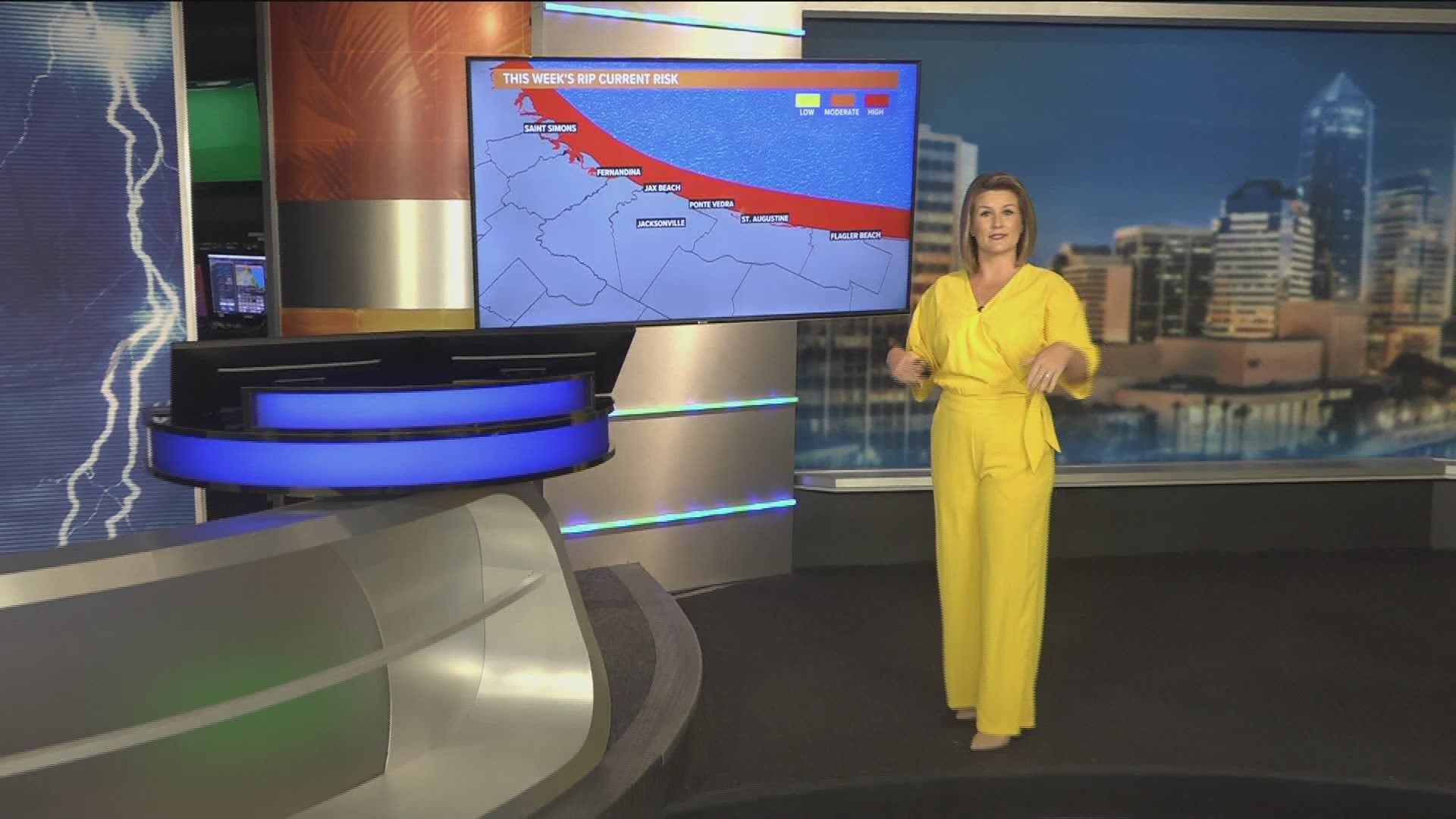JACKSONVILLE, Fla. — Despite the sunshine and comfortable temperatures in the upper 70s, lower 80s this week, it'll be gusty along the coast. The persistent onshore breeze will kick up the surf and seas, and increase the rip current risk at local beaches.
But - what is a rip current and what do you do if you get caught in one?
Rip currents are channeled currents of water flowing away from the shore. They typically extend from near the shoreline, through the surf zone, and past the line of breaking waves. The surf zone is the area between the high tide level on the beach to the seaward side of breaking waves.
Rip currents form when waves break near the shoreline, piling up water between the breaking waves and the beach. One of the ways this water returns to sea is in the form of a rip current - therefore this narrow stream of water moves swiftly away from shore, often perpendicular to the shoreline.
The length and width of rip currents can vary greatly. Rip currents can be as narrow as 10 to 20 feet in width, but they also could be up to ten times wider. Rip currents begin to slow down as they move offshore, beyond the breaking waves, but sometimes extend for hundreds of feet beyond the surf zone.
Rip current speeds can vary. Sometimes they are too slow to be considered dangerous. However, under certain wave, tide, and beach shape conditions the speeds can quickly become dangerous. Rip currents have been measured to exceed 5 mph, slower than you can run but faster than you or even an Olympic swimmer can swim.
Are all rip currents dangerous? No, but it is highly dependent on weather conditions and each individual's confidence or ability in the water. The strength and speed of a rip current will likely increase as wave height and wave period increase.
Rip currents are not “undertow” or “riptides.” These are obsolete terms. In some areas, people have used the term undertow to describe the combination of being knocked down, pulled out, and submerged due to a lack of swimming ability and/or lack of knowing what to do to escape. This is where the myth formed that a rip current (or “undertow”) pulls you under water.
A rip current pulls you out, not under.
Rip currents can be found on many surf beaches every day. It's the risk and location of them that is shifting. Rip currents most typically form at low spots or breaks in sandbars, and also near structures such as groins, jetties and piers. Rip currents can occur at any beach with breaking waves, including the Great Lakes.
Drowning deaths occur when people pulled offshore are unable to keep themselves afloat and swim to shore. This may be due to any combination of fear, panic, exhaustion, or lack of swimming skills. Rip currents are the greatest surf zone hazard to all beachgoers. They can sweep even the strongest swimmer out to sea. Rip currents are particularly dangerous for weak and non-swimmers.
Bottom line: DO NOT PANIC! Swim parallel to shore or wave for help if you do get caught. If you aren't a confident swimmer, it might be best to only dip your toes into the Atlantic this week or just stay out of the water altogether.

